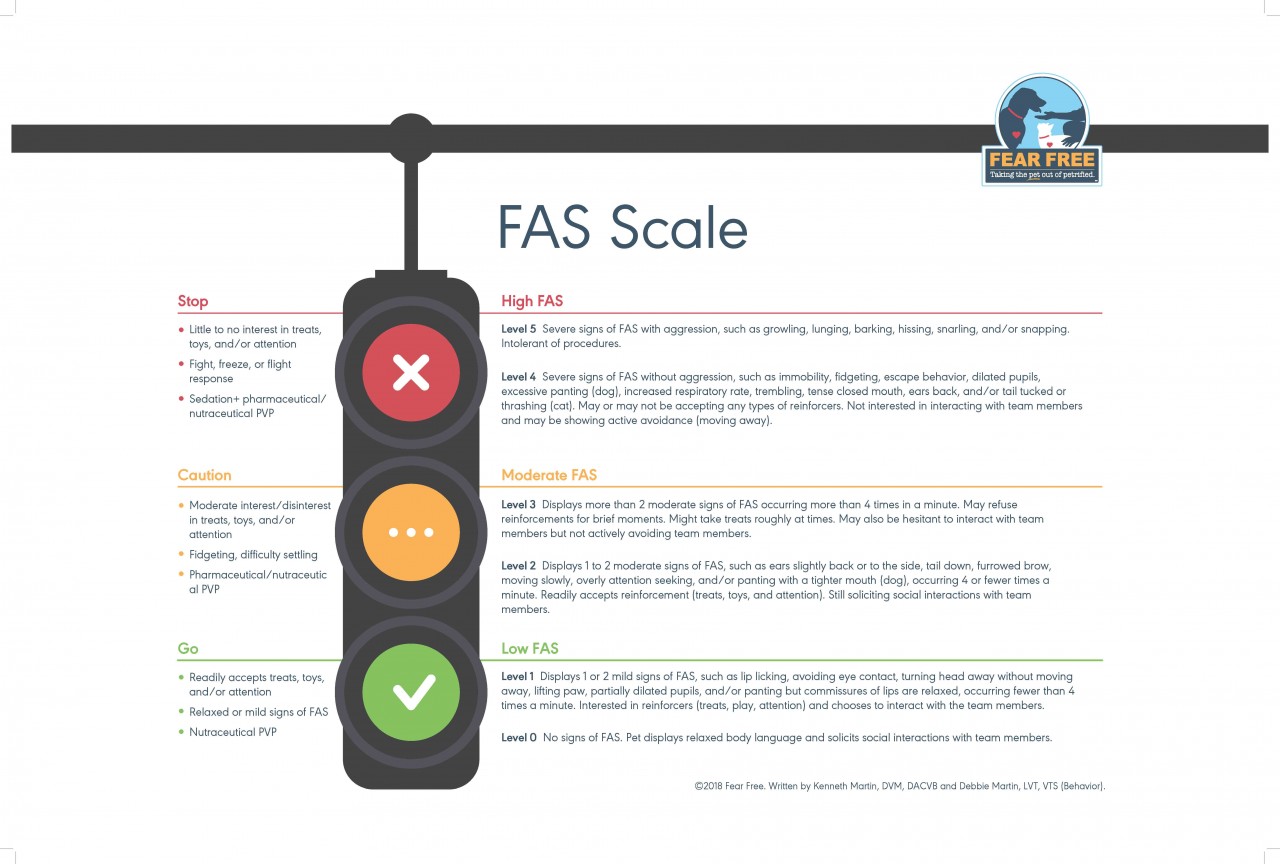“My dog HATES going to vet!” “Clipping my dog’s nails is a full out wrestling match!” “My dog runs away when the bathtub runs!” If any of these comments or sentiments sound familiar, learning the “cooperative care” approach can help. Cooperative care involves training and teaching animals to participate in and/or allow handling to reduce fear, anxiety & stress (FAS). There is a multitude of ways to approach this process. Most involve offering the animal the opportunity to say no, and by default to say yes to beginning or continuing a procedure like clipping a dog’s nails, touching their ears, and more.
Offering a trained chin rest on a pillow or playing Chirag Patel’s Bucket Game, where a dog is reinforced for focusing attention on the bucket, cup or pillow (or any other small item used as a target), and the handler initiates the beginning steps of the husbandry task – perhaps touching the dog’s ears in preparation for ear cleaning, is a step in the right direction. If the dog takes his attention away from the bucket, the task stops – as does the reinforcement! If the dog stays focused on the bucket (or returns his gaze to the bucket), the task (and the reinforcement) is continued. The dog learns that he controls the procedure, and as a result becomes less stressed about it, eventually choosing to continue the procedure by gazing at the bucket or resting his head back on the pillow.
Other methods can include teaching your dog to tolerate being briefly restrained/muzzled, de-sensitizing handling with a touch gradient and pairing high value rewards with unpleasant activities (think a bath buddy loaded with peanut butter in the tub)! As each dog is a study of one, your plan for reinforcing cooperative care should be reward-based, individualized and take into account your dog’s specific needs and goals.
If your dog has moderate-high FAS, (see below) you may need a consult with a veterinarian or veterinary behaviorist to discuss prescription medications, nutraceuticals, and/or pheromone aids. Another resource for pet owners is Fear Free: veterinary professionals and trainers can obtain certifications to assist owners with low-stress treatment protocols and to prepare companion animals. Pet owners can learn more about this program and find a directory of participating professionals at https://fearfreehappyhomes.com/.
As we all appreciate a medical professional offering us choice (“Are you ready?” “Do you need a moment?”), discussing and preparing us for a procedure (“This might sting a bit.”), and perhaps even offering us a mild sedative before a procedure, we can and should do the same for our companion animals.
Gabriela Hubbard, CPDT, KA, Fear Free Certified Professional, Licensed Family Paws Parent Educator, Dog Bite Safety Educator/ High Five Dog Training, LLC.

